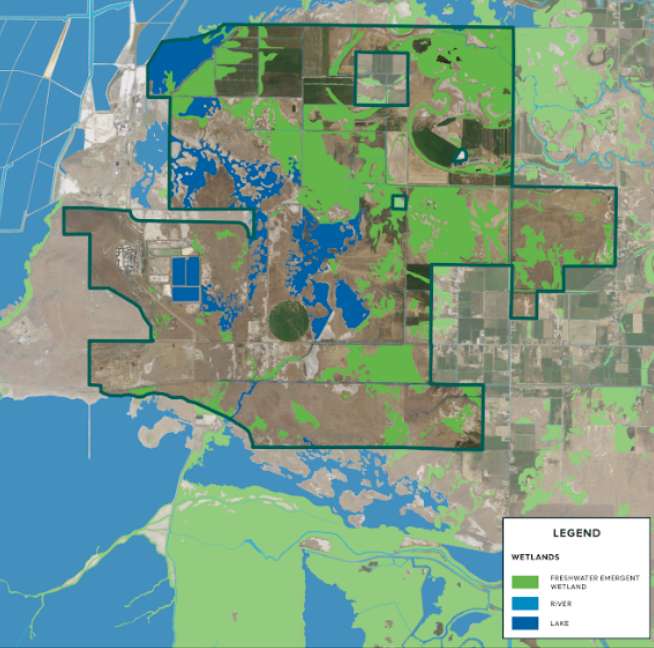Estimated read time: 3-4 minutes
This archived news story is available only for your personal, non-commercial use. Information in the story may be outdated or superseded by additional information. Reading or replaying the story in its archived form does not constitute a republication of the story.
SALT LAKE CITY — Utah Inland Port Authority officials are reviewing the body's "wetlands strategy" as they rework the proposed industrial development plan in a vast swath of western Weber County adjacent to the Great Salt Lake.
The plans have sparked concern from some, worried about the possible impact of development to the lake and the Harold Crane and Ogden Bay waterfowl management areas, also adjacent to the proposed development zone. A messaging campaign is afoot by the critics, who are pressing for more study of the project area. At the same time, Ben Hart, executive director of the Utah Inland Port Authority, said Monday officials have slowed the plan development process and are giving it additional scrutiny.
"There's a lot of wetlands in this area, so how we move forward with that is important to us. It's incredibly important to us. We just want to make sure we're taking the right actions, preserving the wetlands and also making sure that we're allowing for good development to occur around them as well," Hart said. The proposal was preliminarily scheduled for final consideration on March 26 by the port authority board, but Hart says that probably won't happen until May as the guidelines for wetlands development get additional attention.
The boundaries of the West Weber Inland Port Project Area, extending over 8,785 acres of largely undeveloped land, won't change, Hart said. Wetlands, though, stand to get additional protections, as described by the port authority administrator, though he thinks industrial and other development is environmentally feasible in their midst. The plans publicly emerged last September, though the scope grew greatly last January, when Weber County commissioners formally asked inland port authorities to move forward with the proposal.

"We absolutely do support development in the area. I think there are people who want to not ever have development anywhere near the wetlands. But the reality is, you (can) have development that is harmonious with the sensitive land in the area," Hart said. Port authority officials have already created eight project areas around Utah, to be developed by the private sector in conjunction with the port authority, to spur economic growth.
Meantime, critics like Patty Becnel, of Pleasant View, remain skeptical. She, other concerned Weber County residents and reps from Stop the Polluting Ports are behind the messaging campaign to press Weber County commissioners and Utah Inland Port Authority officials to rethink the plans. "The port authority is not living up to all the things it has promised," Becnel said.
The critics worry the development plans would be "extremely detrimental" to the Great Salt Lake and lead to an increase in pollution brought on by increased truck traffic. "It's just a beautiful, tranquil area, and what they're proposing is massive," Becnel said.
In a letter to county commissioners, the environmental boosters ask for a traffic study to get a better gauge of air pollution caused by increased vehicle traffic brought on by the proposed development. They also seek a "comprehensive independent wetland study" to assess the potential impact to the area ecosystem.
The long-term vision, as put forward by inland port officials, calls for industrial development on an 8,436-acre expanse in extreme western Weber County near where Compass Minerals and Western Zirconium operate. Also included is a 349-acre expanse east of that where a business park is proposed.
The entire landmass wouldn't become a solid industrial zone — development wouldn't occur in the most environmentally sensitive areas. Nevertheless, critics like Deeda Seed, a Stop the Polluting Port leader, worry the plans would still take a toll on the Great Salt Lake and the wetlands around it in Weber County. She noted the lowering water level of the lake and Utah officials' concerted efforts to counter that.
"This is at a time when the Great Salt Lake is in ecological crisis," she said.










